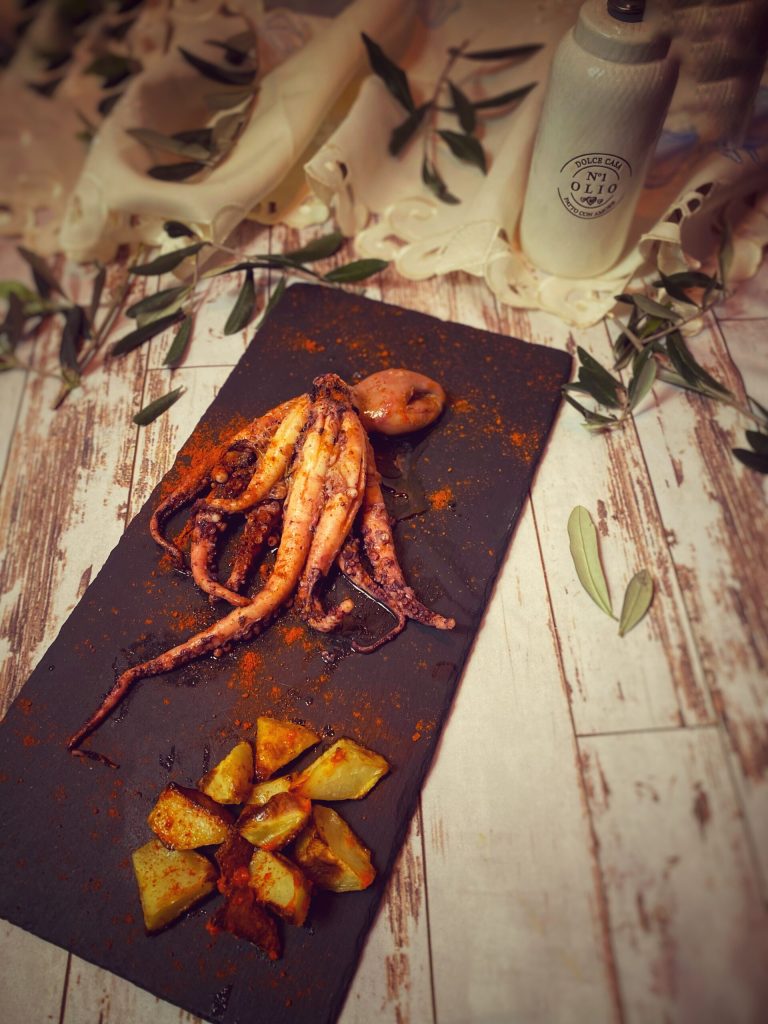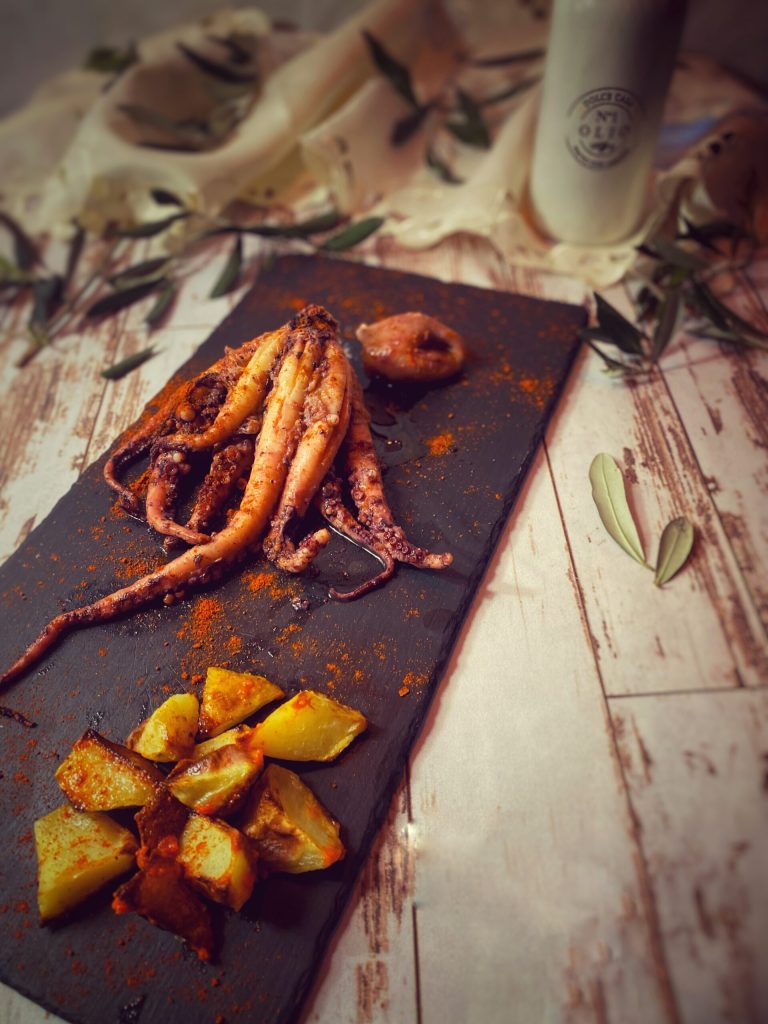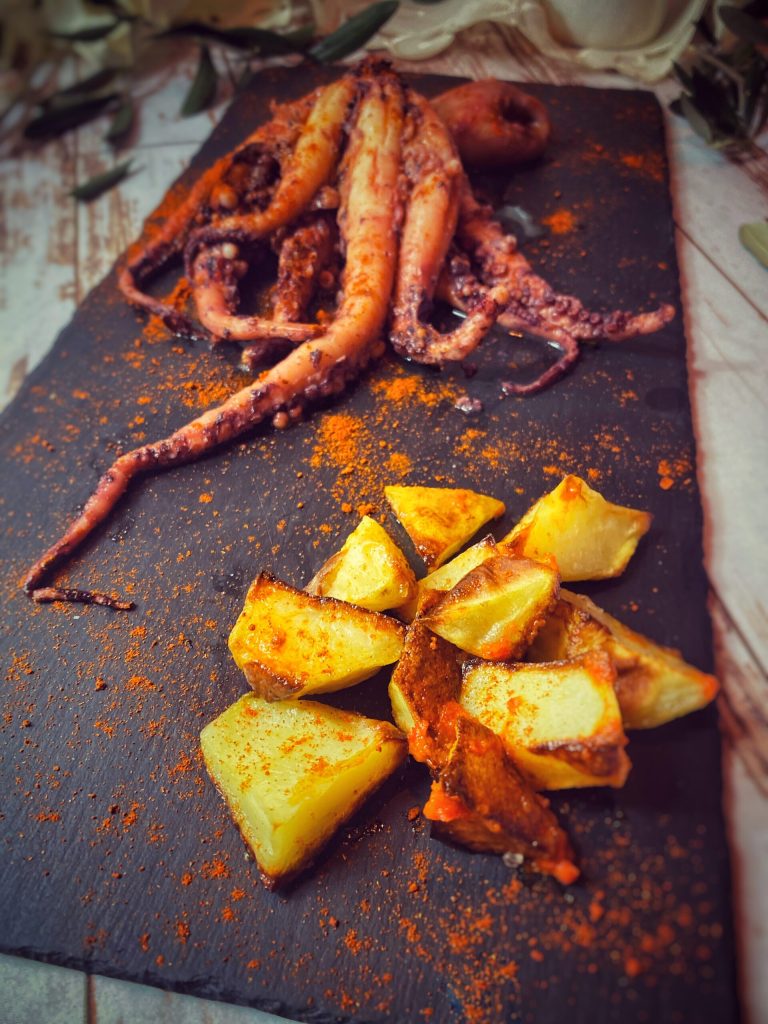The Octopus with slow cooker is also called “pulled polp” online due to its similarity to the well-known pulled pork.
In reality, the cooking method is different although they are united by the method: slow cooking at low temperature.
I cooked the octopus sous vide in a slow cooker set to LOW for 7 hours, but you can also cook it in water using a rooner to maintain a constant temperature of 162°F for 8 hours.
I served the octopus with patatas bravas, typical Spanish tapas: potatoes cut into large cubes, fried in olive oil and seasoned with brava sauce, a spicy sauce based on La Vera hot paprika or cayenne pepper, or a mix of sweet and hot paprika, onion, and wheat flour or vinegar or broth.

- Difficulty: Easy
- Cost: Medium
- Preparation time: 10 Minutes
- Portions: 2 servings
- Cooking methods: Other, Slow cooking
- Cuisine: Contemporary
- Seasonality: All seasons
Ingredients
- 1.75 lbs octopus
- 2 leaves bay leaf
- to taste black peppercorns
- to taste paprika
- to taste extra virgin olive oil
- 8.8 oz new potatoes
- to taste olive oil
- 1 clove garlic
- 1 onion
- to taste hot paprika
- 1 tbsp flour
- 1 cup broth
- to taste salt
Tools
- 1 Vacuum Sealer vakuum sealer
- 1 Pot crockpot
Steps
Vacuum seal the octopus with bay leaves and peppercorns.
Place it in the crockpot, cover with water.
Cook on SLOW mode for 7 hours.
Chill in ice for 1 hour.
Heat the grill, quickly pass the octopus on it.
Season with extra virgin olive oil and paprika.

Cut the potatoes into 3/4 inch pieces, fry in plenty of olive oil. Salt.
Prepare the brava sauce: sauté the crushed garlic with the onion, add the flour.
Blend, add the hot paprika and broth.
Drizzle the potatoes with the sauce.

To stay on the Spanish theme, you can accompany the dish with a glass of Sangria!
FAQ
What other slow cooking method can be applied to octopus?
You can find the recipe on the blog: Hobotnica ispod peke, or octopus peka.
The preparation process of the Croatian peka (or peča pronounced pecia in this case) represents one of the longest cooking techniques.
Sometimes, depending on the type of meat and quantity to roast, the peka stays in the fireplace for several hours, and its contents need to be turned frequently to ensure even cooking.
In the past, various unglazed terracotta vessels were used on the open hearth: the lòlifa (round pots), the “pignate de tera”, with or without handles, sometimes with three feet (“lòlifa a tre pie”), the tècie and the strepign bowl (čeripinja), a sort of bell-shaped terracotta lid that, when made of cast iron, is called “peka”.
It is a traditional and still widely used method throughout Croatia for cooking a wide variety of foods over coals, using a terracotta or cast-iron dome or bell.
The peka lid has a handle on top that allows it to be lifted without getting burned.
Once the dish is covered with the food to be roasted, the lid is covered with hot coals.What are tapas?
Small portions, both cold and hot, when consumed as an aperitif, which can be more plentiful if consumed as an appetizer in restaurants.
“Going for tapas” means touring the “taverns” – typical Spanish bars – and tasting a different tapa with each glass of wine or beer ordered.

